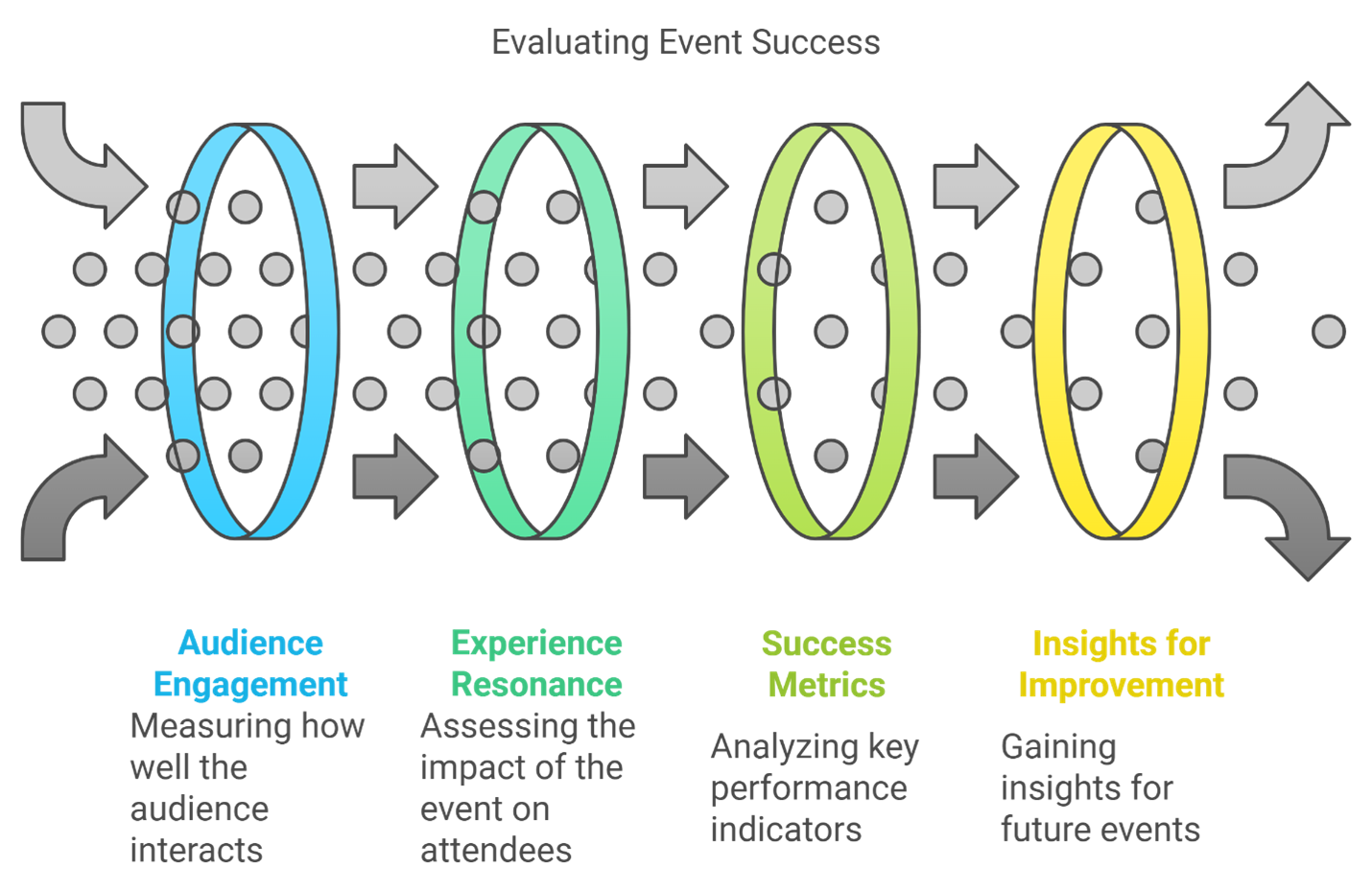Measuring Success - Event Evaluation

In the fast-paced world of event planning, success is more than just about filling seats or booking a great venue. It's about creating experiences that resonate, engaging audiences meaningfully, and learning what worked—and what didn't—to improve for the future. But how do you measure these intangible factors? Here's a comprehensive guide to evaluating your event's success through key metrics that will not only highlight your victories but also provide valuable insights for future planning.
Attendance and Engagement Metrics
The most basic indicator of your event's success is attendance. However, it's not just about how many people showed up; it's about how involved they were. Tracking these metrics can reveal a lot about your event's impact:
- Total Attendance: Whether your event was in-person, virtual, or hybrid, the number of participants is your first benchmark. Compare this against your registration goals to see if your marketing and outreach efforts paid off.
- Engagement Levels: Did attendees stay engaged throughout the event? Look at session-specific attendance to understand which topics sparked the most interest. Also, use tools like polls, Q&A sessions, and social media interactions to measure audience participation.
Attendee Satisfaction
Understanding how attendees felt about your event is crucial for future success. Post-event surveys are one of the best ways to gather feedback directly from your audience:
- Post-Event Surveys: Send surveys promptly after the event to capture fresh impressions. Key areas to cover include overall satisfaction, session content quality, and logistical experiences, such as registration and event flow.
- Net Promoter Score (NPS): Ask attendees how likely they are to recommend your event to others. This question gives a sense of attendee loyalty and event value.
Return on Investment (ROI)
Financial success is another crucial metric, particularly for large-scale events with considerable costs:
- Financial Metrics: Compare total revenue—including ticket sales, sponsorships, and merchandise—against total expenses such as venue rental, catering, and marketing costs.
- Breakeven Analysis: Calculate how many attendees were needed to cover your costs and whether you exceeded this goal. This helps you refine pricing strategies for future events.
Lead Generation and Conversion Rates
For business-oriented events, lead generation is often a primary objective. It's essential to track how effectively your event connected with potential customers:
- Lead Quantity: Record the number of leads generated during the event through business card exchanges, signups, or app downloads.
- Conversion Rates: Monitor how many of those leads turned into actual business after the event. This data will help determine the effectiveness of your outreach strategies.
Social Media and Online Engagement
The online conversation surrounding your event can be a powerful indicator of its success:
- Social Media Metrics: Track the use of event hashtags, likes, shares, and comments to gauge the event's reach and engagement.
- Website Traffic: Monitor your website analytics during and after the event. A spike in visitors often indicates an increased interest generated by the event.
Long-Term Impact
While immediate feedback is important, it's also helpful to consider the broader, long-term effects of your event:
- Brand Awareness: Conduct surveys to see if attendees' perceptions of your brand improved after the event. Did the event raise awareness or reinforce your brand identity?
- Community Building: Assess if your event fostered ongoing engagement. Are attendees interacting on social media or keeping in touch long after it's over?
Qualitative Feedback
Numbers only tell part of the story. Qualitative feedback adds a deeper layer of understanding:
- Testimonials and Case Studies: Collect personal anecdotes from participants about how the event impacted them. These stories are invaluable for showcasing success in a way that goes beyond raw data.
- Focus Groups: Hosting post-event focus groups can provide in-depth feedback on specific elements of your event, helping you understand what worked and what didn't.

Conclusion
Measuring your event's success requires a blend of quantitative data and qualitative insights. From assessing attendance and engagement to understanding financial outcomes and gathering attendee feedback, every piece of information offers a stepping stone for improvement. By digging into these metrics, you'll be equipped to make each future event even better.
Ready to take your event evaluations to the next level? PAI can help you start implementing these metrics. Watch how the insights transform your future events into unforgettable experiences. Let's create impactful moments—one data point at a time!
Whether you are in the Government or private sector, PAI Consulting can help you achieve smooth meetings by setting clear objectives and next steps, encouraging participant engagement, properly managing time, and taking advantage of available technologies. With these tips and more, we can help you avoid any hiccups, create a streamlined meeting, and achieve your organization’s goals.
Back to Meeting Your Needs home.
Do you have questions or concerns about meetings? Share them with us!
PAI Consulting | Helping you succeed. Learn more.
Any opinions expressed in this article are those of the author and not the opinion of PAI Consulting. In addition, this article may contain links to third-party websites. PAI Consulting does not endorse or make any representations about them, or any information, software, or other products or materials found there, or any results that may be obtained from using them.
